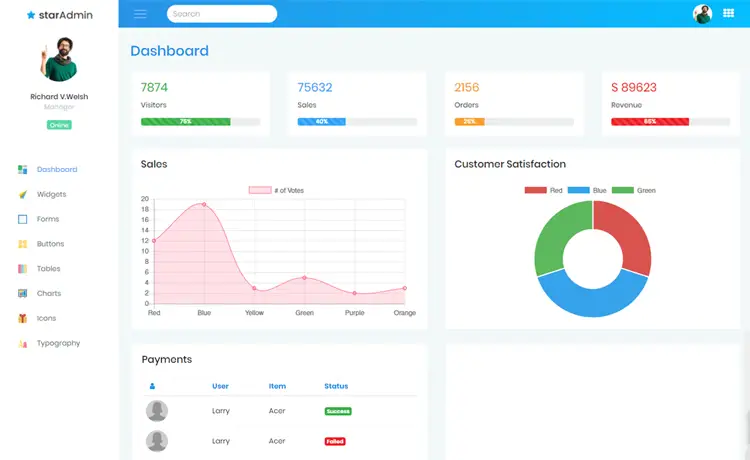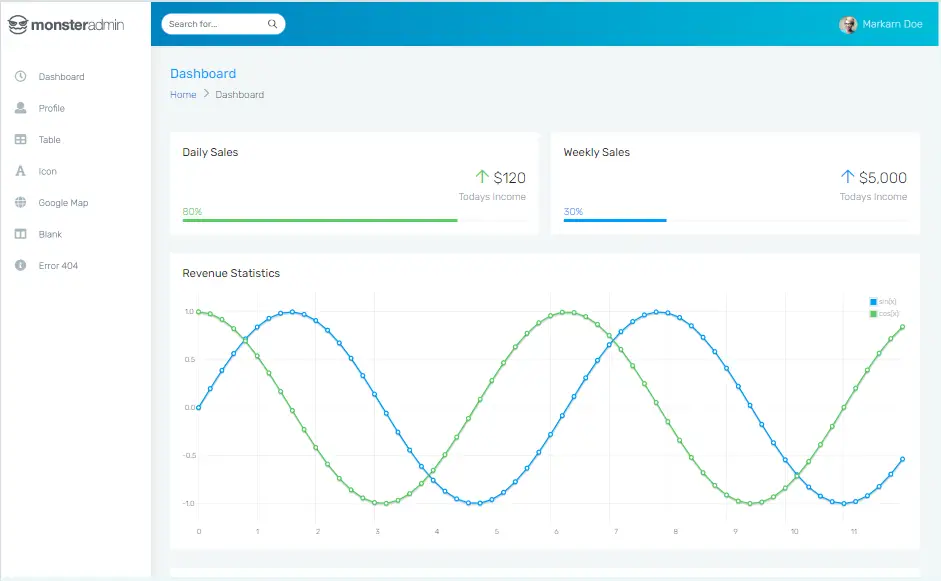Implementing Rate Limiting in .NET
By Tan Lee Published on Feb 21, 2025 530
In this guide, we’ll explore the concept of rate limiting, why it's essential, and how to implement it in .NET using Visual Studio.
What is Rate Limiting?
Rate limiting is the practice of controlling the number of requests a client can make to a server within a specified time period. This ensures fair distribution of resources and prevents a single client from overwhelming the system.
Why is Rate Limiting Important?
Here are several reasons why rate limiting is necessary:
- Prevent System Overload: Safeguard your server from excessive requests that could overwhelm it.
- Ensure Fair Usage: Distribute server resources evenly among all users.
- Mitigate Attacks: Protect your application from DoS attacks or misuse of the API.
- Cost Control: Minimize unnecessary resource consumption, especially in cloud environments.
- Improve Stability: Enhance application performance and reliability.
Setting Up Rate Limiting in .NET Using Visual Studio
.NET 7 comes with built-in rate-limiting middleware that simplifies the process of implementing rate limits.
Here’s how to integrate it into your application using Visual Studio.
Step 1: Create a New Web API Project
- Open Visual Studio.
- Click on "Create a new project."
- Select ASP.NET Core Web API and click Next.
- Name your project (e.g., RateLimitingExample) and click Next.
- Choose .NET 7 as the framework and click Create.
This will create a new Web API project with the necessary dependencies.
Step 2: Add Rate Limiting Middleware
To enable rate limiting, configure the middleware in the Program.cs file. Add rate-limiting policies to control the flow of traffic by replacing the existing content with the following code:
using Microsoft.AspNetCore.RateLimiting;
using System.Threading.RateLimiting;
var builder = WebApplication.CreateBuilder(args);
// Add services to the container
builder.Services.AddControllers();
// Configure rate limiting policies
builder.Services.AddRateLimiter(options =>
{
options.AddPolicy("FixedWindowPolicy", context =>
RateLimitPartition.GetFixedWindowLimiter(
partitionKey: context.Connection.RemoteIpAddress?.ToString() ?? "default",
factory: _ => new FixedWindowRateLimiterOptions
{
PermitLimit = 10, // Allow 10 requests
Window = TimeSpan.FromSeconds(10), // Within 10 seconds
QueueProcessingOrder = QueueProcessingOrder.OldestFirst,
QueueLimit = 2 // Allow 2 requests in the queue
}));
});
var app = builder.Build();
// Use rate limiting middleware
app.UseRateLimiter();
// Map endpoints
app.MapControllers();
app.Run();Step 3: Add a Controller
- Right-click the Controllers folder in Solution Explorer.
- Select Add > Controller.
- Choose API Controller – Empty and name it WeatherForecastController.
- Replace the contents of the generated file with the following code:
using Microsoft.AspNetCore.Mvc;
[ApiController]
[Route("[controller]")]
public class WeatherForecastController : ControllerBase
{
[HttpGet]
[EnableRateLimiting("FixedWindowPolicy")]
public IActionResult GetWeather()
{
return Ok(new { Message = "Weather data retrieved successfully!" });
}
}After 10 requests within 10 seconds, the API will return a 429 Too Many Requests response.
Advanced Features of Rate Limiting
The built-in middleware allows you to further customize your rate-limiting strategies.
- Sliding Window Policy: Offers a smoother rate-limiting experience by spreading limits across smaller time segments.
- Token Bucket Policy: Enables short bursts of requests but enforces a rate limit over time.
- Concurrency Policy: Restricts the number of simultaneous requests processed by the server.
Consequences of Not Using Rate Limiting
Without rate limiting, your application might face several issues:
- Resource Exhaustion: Overloaded servers, slower responses, and potential crashes.
- Unfair Usage: A single client can monopolize resources, denying access to others.
- Security Risks: Increased vulnerability to DoS attacks and brute-force attempts.
- Higher Costs: Excessive resource consumption could drive up operational costs.
Benefits of Using Visual Studio
Visual Studio provides an integrated and efficient environment for implementing rate limiting:
- Built-in Debugging: Easily write and test code with Visual Studio’s debugging tools.
- NuGet Package Manager: Quickly add or manage dependencies.
- IntelliSense: Benefit from code completion and error-free implementation.
Rate limiting is a critical feature for creating secure, scalable APIs. With .NET’s built-in Rate Limiting Middleware and the tools provided by Visual Studio, you can efficiently implement rate-limiting policies to ensure your application runs smoothly, securely, and fairly for all users.
- Implement security headers for an ASP.NET Core
- How to add security headers to an ASP.NET Core Application
- How to Initialize TagHelpers in ASP.NET Core with Shared Data
- Boost Your ASP.NET Core Website Performance with .NET Profiler
- The name 'Session' does not exist in the current context
- Implementing Two-Factor Authentication with Google Authenticator in ASP.NET Core
- How to securely reverse-proxy ASP.NET Core
- How to Retrieve Client IP in ASP.NET Core Behind a Reverse Proxy





